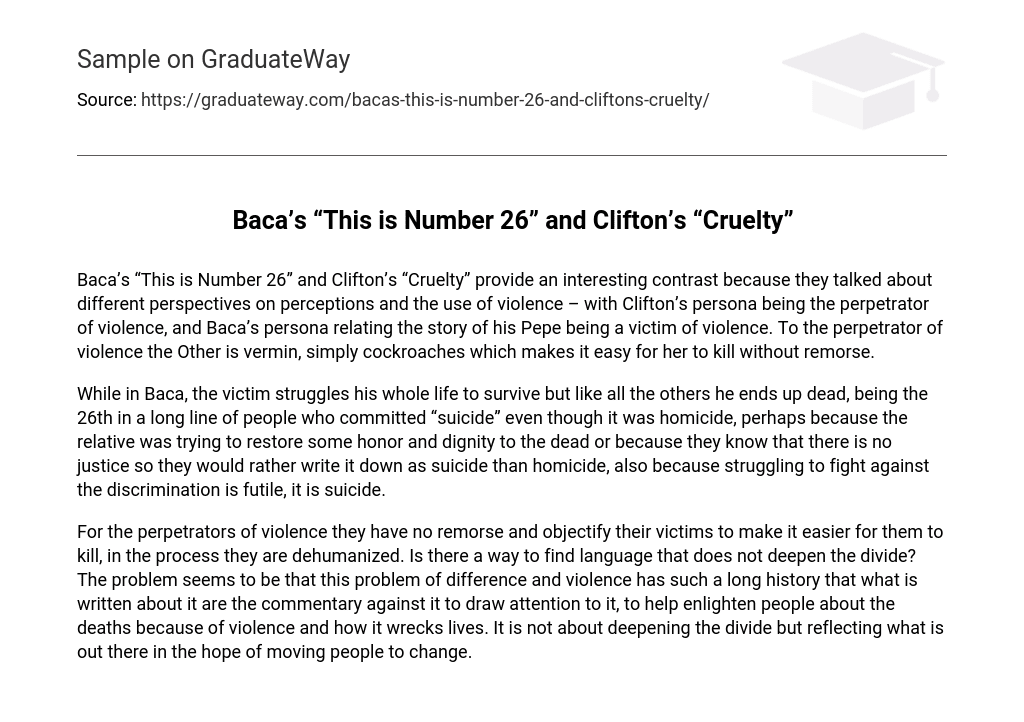Baca’s “This is Number 26” and Clifton’s “Cruelty” provide an interesting contrast because they talked about different perspectives on perceptions and the use of violence – with Clifton’s persona being the perpetrator of violence, and Baca’s persona relating the story of his Pepe being a victim of violence. To the perpetrator of violence the Other is vermin, simply cockroaches which makes it easy for her to kill without remorse.
While in Baca, the victim struggles his whole life to survive but like all the others he ends up dead, being the 26th in a long line of people who committed “suicide” even though it was homicide, perhaps because the relative was trying to restore some honor and dignity to the dead or because they know that there is no justice so they would rather write it down as suicide than homicide, also because struggling to fight against the discrimination is futile, it is suicide.
For the perpetrators of violence they have no remorse and objectify their victims to make it easier for them to kill, in the process they are dehumanized. Is there a way to find language that does not deepen the divide? The problem seems to be that this problem of difference and violence has such a long history that what is written about it are the commentary against it to draw attention to it, to help enlighten people about the deaths because of violence and how it wrecks lives. It is not about deepening the divide but reflecting what is out there in the hope of moving people to change.





